At a Glance: 3D printing is reshaping how drones and UAVs are designed and manufactured. It enables faster production, lightweight and durable components, and on-demand customization key for industries requiring agility and frequent design changes. From propeller guards to full fixed-wing airframes, additive manufacturing offers a flexible, cost-effective solution for modern drone production across commercial, military, and civilian sectors.
Although their origins trace back to 17th-century hot air balloons, unmanned aerial vehicles (UAVs), commonly known as drones, have rapidly grown in recent decades. Their applications span commercial, military, and civilian purposes, and they come in many forms - from nimble quadcopters used for aerial photography to fixed-wing aircraft deployed for long-range surveillance, mapping, and environmental monitoring. But despite their differences, they’re all subject to a common law – gravity – and need to be lightweight, durable, and aerodynamically efficient for optimal operation.
Traditional methods of drone manufacture, such as machining, carbon-fiber layup, and injection molding, can obviously get the job done. However, they’re also susceptible to inefficiencies that increase cost, extend lead times, and limit design flexibility. These drawbacks become even more acute when customization, frequent design updates, and low-volume production are added to the equation.
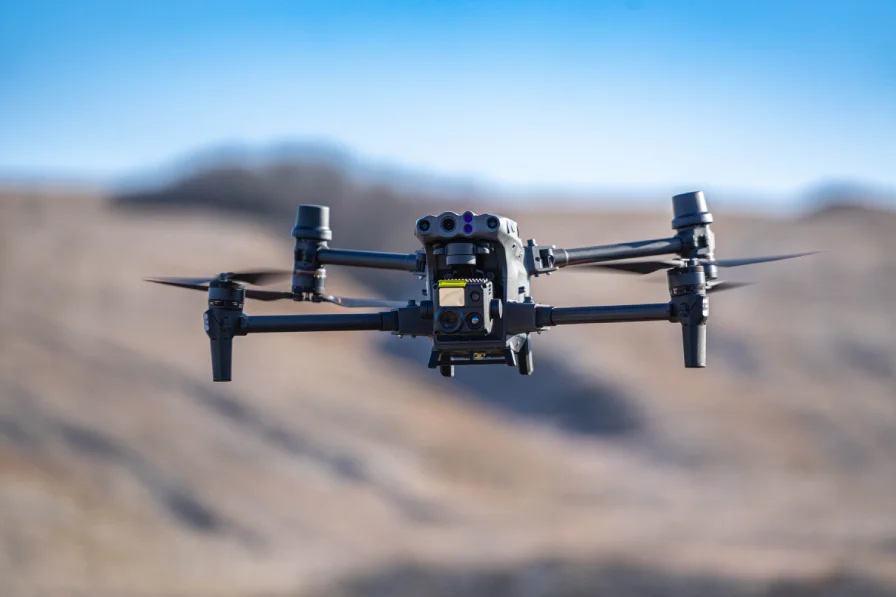
This is where additive manufacturing (AM), or 3D printing as it’s commonly referred to, offers a compelling alternative to conventional methods. 3D printing offers advantages that include faster part production and greater design freedom than typical manufacturing methods. AM allows for a virtual inventory, negating the costs associated with physical storage. Parts can be produced on demand to accommodate rapidly changing designs and short-circuit inefficient supply chains. And 3D printers can be located at the point of need – even in the field – enabling rapid production and deployment of spare drone parts as needs dictate.

As a result, 3D printing is increasingly used to fabricate everything from drone propeller guards to aerodynamic fairings and internal brackets, and even full 3D printed fixed-wing drones. As drone applications continue to grow and drive demand, 3D printing is becoming a highly effective tool in the modern UAV manufacturing toolbox.
Additive manufacturing is reshaping how drones and UAVs are designed, built, and deployed. Compared to traditional manufacturing, AM offers unmatched speed, flexibility, and cost efficiency, making it especially well-suited for the high-mix, low-volume nature of drone production. Lighter materials, more efficient manufacturing processes, a streamlined workflow, and other advantages combine to make additive technology a highly suitable alternative to conventional production methods.
Weight is a critical factor in drone performance, influencing flight time, payload, and energy efficiency. AM supports advanced lightweighting through the use of complex internal lattice structures that are difficult to achieve with conventional manufacturing. Additionally, AM’s additive nature enables topology-optimized shapes, and high-performance polymers enable parts that are lighter yet stronger than traditionally manufactured equivalents. These advantages combine to create lightweight, high-performance drones capable of extended flight times and reduced energy consumption. AM also allows for the consolidation of multiple components into fewer parts, cutting assembly time and minimizing potential failure points while reducing weight and lowering costs.
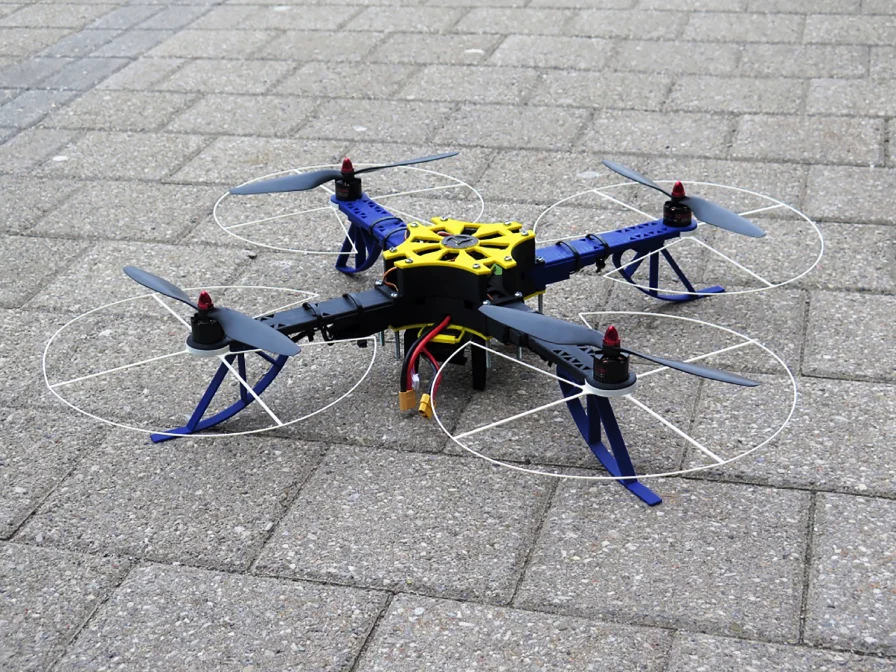
This 3D printed drone quadcopter resulted from a student design challenge.
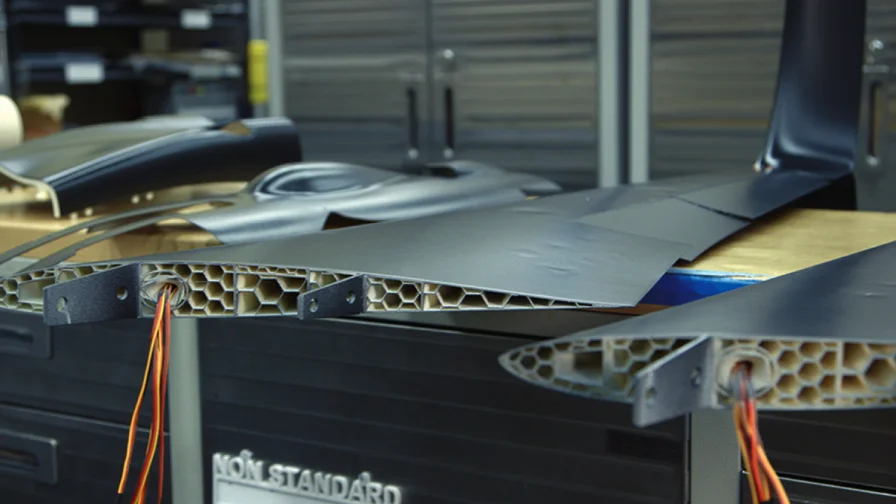
AM significantly reduces development timelines by eliminating the need for tooling or machining. Drone makers can prototype, test, and revise their designs with minimal downtime. Design revisions can be printed and tested within days—not weeks—accelerating iteration and shortening the path to market. These time savings also extend to production, with quicker fabrication of tools, fixtures, and end-use components. This agility is especially valuable in rapidly evolving markets such as surveillance, delivery logistics, or tactical UAV systems, where time is often a competitive advantage.
From concept to final part, the AM process remains entirely digital, enabling tighter integration between design, simulation, and fabrication. This lets teams collaborate more easily and make real-time design updates across dispersed locations. Supply chain efficiency is also improved, allowing production of UAVs and spare parts closer to the point of need, supporting forward-deployed operations in remote places. This is particularly valuable for defense, emergency response, or remote-area applications, where spare parts must be available quickly and reliably. In-house and local production also reduces the risk of economic tariffs and protects intellectual property.
Traditional manufacturing often requires expensive tooling or high minimum order quantities, which can be difficult to justify without high production volumes. AM lowers costs by eliminating the need for tooling and minimizing material waste, making low-volume and one-off production economically viable. This is ideal for custom UAVs or prototypes where flexibility and affordability are key. And the possibility of consolidating assemblies into fewer parts also reduces production and assembly costs.
In terms of material performance, the options are broad and growing. Engineers can choose from heat-resistant polymers, carbon fiber composites, flexible elastomers, or chemically resistant resins. Materials can also be augmented with post-processing options that include ESD sprays, dyes, paints, chemical coatings, and plating. Each material offers distinct advantages for different functions, from high-speed racing to field-ready military drone applications.
Unlike subtractive methods that generate significant waste, 3D printing builds parts layer by layer, using only the material required. In contrast, AM produces less waste, uses fewer raw materials, and often consumes less energy. Manufacturers also have choices among bio-based and renewable materials. This can be a meaningful differentiator for companies seeking to reduce their environmental footprint.
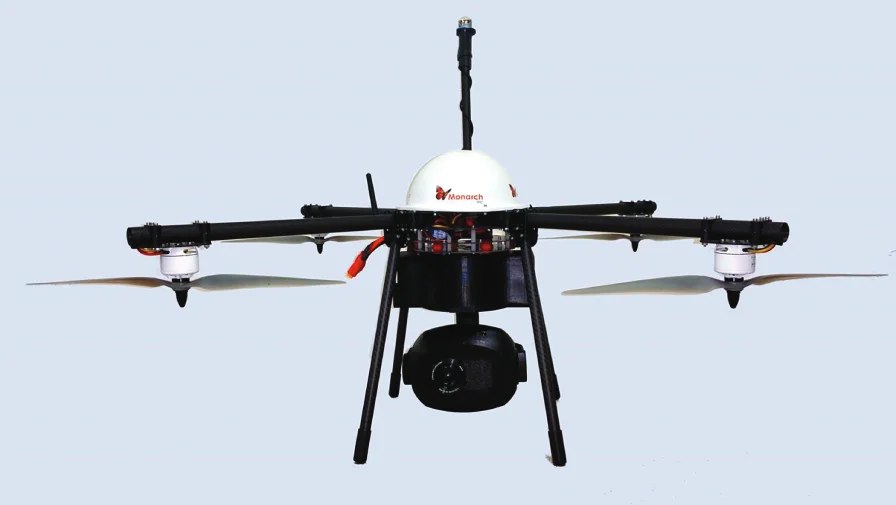
This drone incorporates 3D printed cocoon housing, motor housing and speed controller.
3D printing’s role in drone development goes far beyond basic prototyping. Across military, commercial, recreational, and research sectors, additive manufacturing has become a powerful enabler of performance, adaptability, and innovation, making the concept of the 3D printable drone a practical reality in today’s market. Here’s how different industries are putting 3D printing to work:
Defense is arguably the most advanced sector for 3D printed drones and one of the earliest adopters of 3D printing. In missions where drones must be light, modular, and sometimes disposable, additive manufacturing provides a strategic advantage.
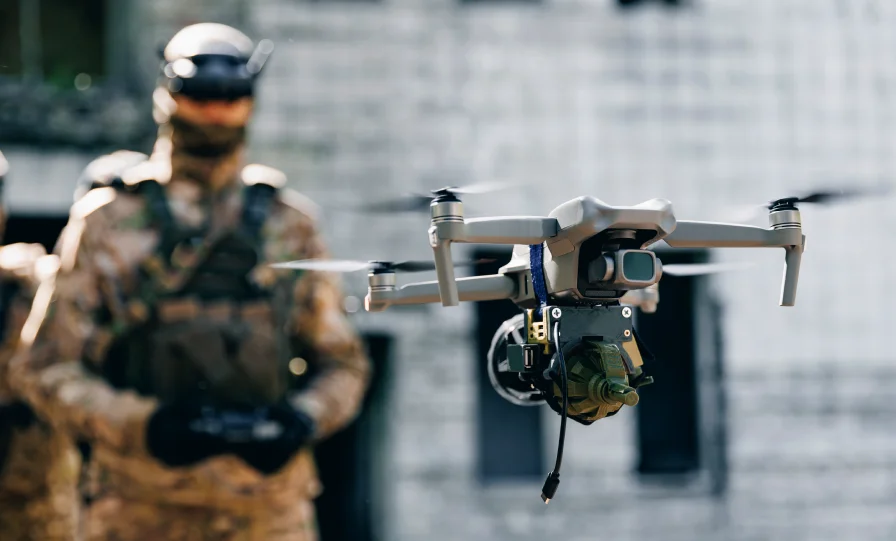
An example of a military drone used for surveillance.
Tactical drones used for surveillance or reconnaissance must be easily configurable to suit mission needs. With 3D printing, teams can quickly create customized frames or enclosures for different sensor packages, communications equipment, or payloads. Attritable drones – designed for short-term use in high-risk environments – benefit from the cost efficiency of 3D printed parts and the ability to deploy fast without waiting for traditional supply chains. Some tactical operations also leverage military FPV (first-person view) drones to give operators real-time visual control during missions, combining the benefits of immersive piloting with situational awareness.
Drones-as-first-responder (DFR) applications are used by public safety agencies such as police, fire departments, and emergency medical services to rapidly respond to emergency calls and incidents. These drones often arrive before human responders, to provide real-time video, data, and situational awareness that can inform and optimize the response by ground teams.
In addition, advanced thermoplastics like ULTEM™ 9085 resin and composite materials offer properties like flame retardancy and radar absorption, making them ideal for defense-grade airframes. These materials are used in drones that must perform under extreme conditions, including heat, vibration, and electromagnetic exposure.
Forward-operating bases can now be equipped with mobile 3D printers, enabling on-demand fabrication of drone parts without the need for centralized logistics. Examples include 3D printing centers set up inside shipping containers that can be transported to the point of need. This level of agility reduces downtime and increases operational independence, an invaluable asset in military settings.
Drones have transformed how industries like agriculture, energy, construction, and logistics operate. Whether monitoring crop health, inspecting remote infrastructure, or delivering medical supplies, UAVs have become essential tools, and 3D printing supports their rapid deployment and continuous evolution.
In agriculture, for instance, drones might require customized payload carriers for different sensors or application nozzles. With 3D printing, engineers can design, test, and implement these attachments within days. Similarly, infrastructure inspection drones often need modular housings to accommodate thermal imaging or LiDAR (light detection and ranging) equipment. Additive manufacturing makes this kind of product agility possible without the burden of retooling or outsourcing.
When parts break in the field, such as a cracked landing gear or a damaged rotor guard, they can often be reprinted and replaced on-site. This on-demand production helps reduce downtime and minimizes operational disruptions.
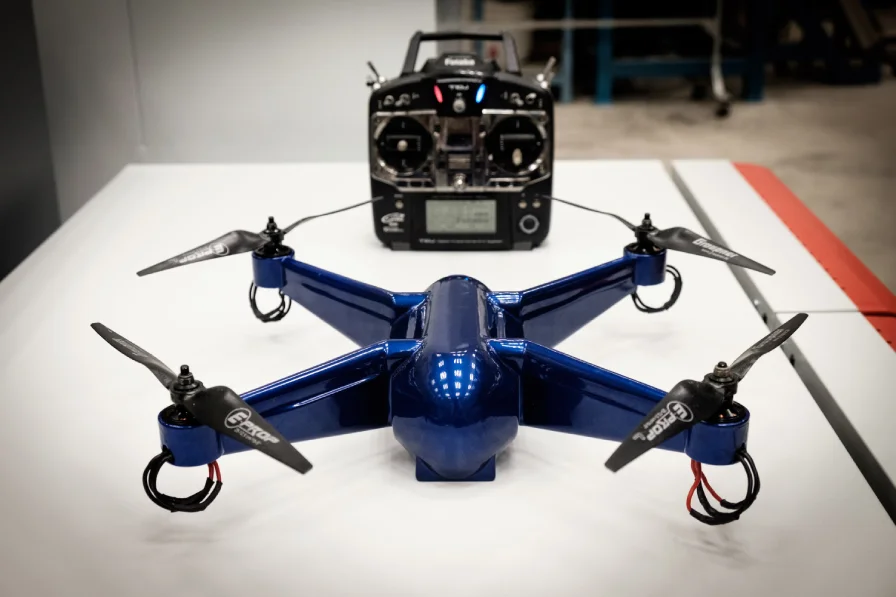
In drone racing and freestyle FPV flying, speed and maneuverability are critical. Here, 3D printing gives pilots an edge by enabling them to customize and fine-tune their drones for optimal performance. Racers often experiment with different frame geometries to improve airflow, reduce drag, and balance agility with stability, especially when developing a 3D printed quadcopter tuned for peak performance. These changes can be prototyped and printed quickly, allowing for iterative refinement between competitions. Materials like TPU (a flexible rubber-like thermoplastic) are frequently used to print impact-resistant FPV drone parts such as bumpers and mounts, helping drones survive crashes and get back in the air faster.
Universities, research institutions, and aerospace startups use 3D printing as a foundational tool for drone innovation. In labs where speed and experimentation are key, additive manufacturing allows engineers and students to test ideas, validate designs, and evolve their concepts quickly.
Building on this rapid development cycle, drones have become central to a range of engineering research projects, from autonomous navigation systems to hybrid propulsion configurations. With 3D printing, researchers can build airframes, custom mounts, and internal housings tailored to their sensors and test equipment, without relying on outsourced fabrication. This approach also supports the development of a 3D printed drone kit, enabling students and engineers to assemble and test complete UAV systems with minimal resources.
As drone technology and their applications evolve, additive technology continues to advance to meet market needs. For example, material science has already developed high-performance thermoplastics and carbon-fiber blends. These materials match traditional materials in strength and offer unique benefits like chemical resistance, flame retardancy, and even radar absorption. And research to meet even more challenging material demands continues.
Artificial intelligence is also shaping the future. Generative design and simulation tools enable engineers to automatically generate part geometries optimized for load-bearing efficiency and weight reduction. These organic, lattice-like structures would be impossible to manufacture traditionally, but are ideally suited to 3D printing.
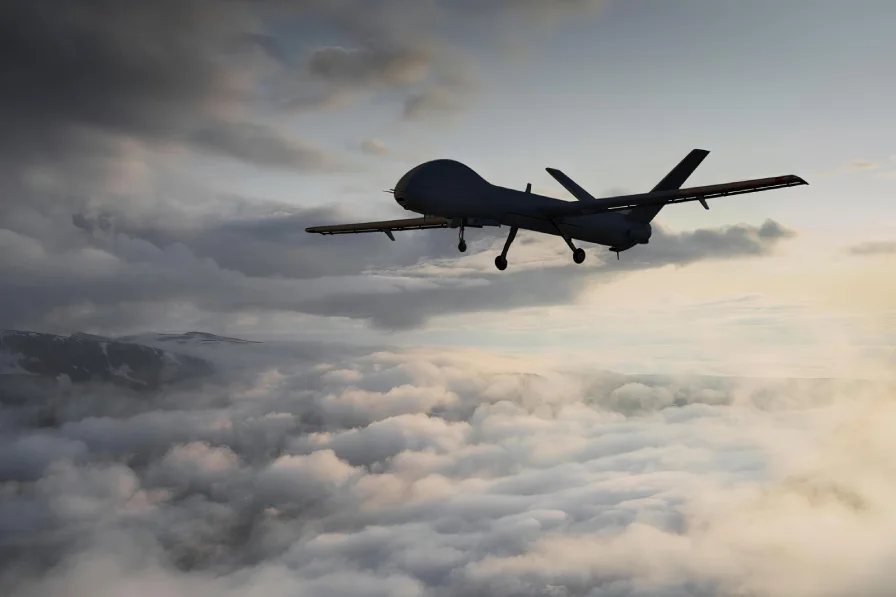
Another exciting trend is multimaterial printing and embedded functionality. In the future, UAVs may be printed with rigid and flexible materials in a single build, or even include embedded sensors, wiring channels, or antenna elements directly within the structure, reducing weight and improving reliability.
Hybrid manufacturing is also on the rise. Many manufacturers combine 3D printing with CNC machining, molding, or casting to achieve the best of both worlds: geometric freedom and high-precision interfaces.
Finally, the move toward digital inventories and distributed production is reshaping how drone parts are stored and delivered. Instead of stocking physical inventory, organizations can maintain a digital catalog of parts that can be printed locally, on demand. This approach simplifies logistics and boosts responsiveness, especially for field maintenance, remote deployments, or defense applications.
Successfully 3D printing drones and UAV parts doesn’t just depend on using the right printer—it requires the right combination of thoughtful design, material strategy, and process integration. To truly capitalize on what additive manufacturing can offer, drone developers should approach it as a complete engineering ecosystem.
It starts with design. Leveraging design for additive manufacturing (DfAM) principles is critical. Instead of simply duplicating parts originally intended to be machined or molded, engineers can create optimized 3D printed drone designs that fully leverage additive manufacturing’s unique capabilities. That means using topology optimization to remove unnecessary mass, integrating internal lattice structures to lighten load-bearing parts while retaining strength, and reducing the overall part count by combining multiple pieces into a single printed component. This results in stronger and lighter 3D printable drone designs.
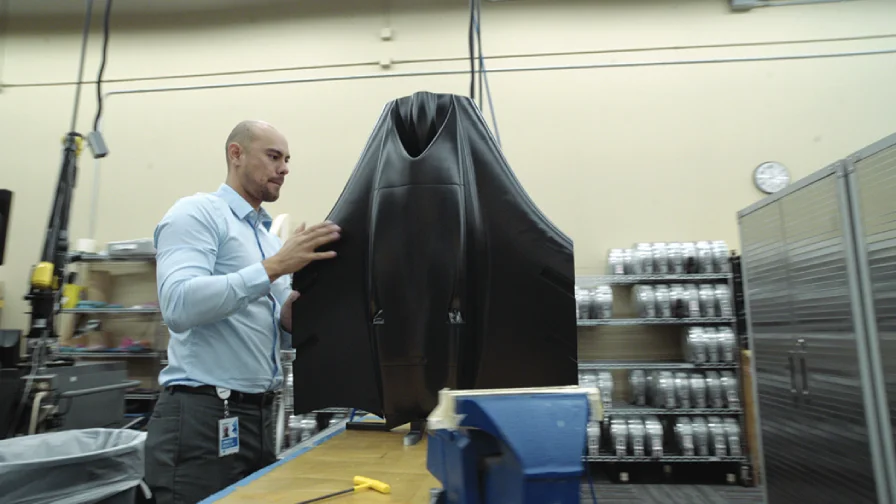
This shape of this 3D printed UAV fuselage section was achieved through topology optimization.
Material selection is equally important. Drones operate in various conditions—from hot deserts to rainy fields to high altitudes—and the material needs vary accordingly. For structural components, high-performance thermoplastics like ULTEM™ 9085 resin or carbon fiber-reinforced nylon offer the strength and heat resistance needed for demanding use cases. For bumpers, dampers, or crash-resilient mounts in racing drones, flexible materials like thermoplastic polyurethane provide impact absorption. And for testing aerodynamic shells or creating fine-detail housings, photopolymer resins offer smooth finishes and tight tolerances.
Choosing the right 3D printing technology is just as crucial. Each process has its strengths. Extrusion-based printing is ideal for tough, functional prototypes and flight-ready structures. SLA provides smooth surfaces that are excellent for aerodynamic studies. Other technologies support repeatable batch production of functional parts.
Given 3D printing’s significant advantage for rapid iteration, your goal should be to print multiple design versions, test them under flight conditions, and use the insights to improve each generation. From fit checks to wind tunnel testing to stress analysis, AM allows you to fail fast and learn faster.
For production parts, integrating additive technology with traditional manufacturing can provide the best of both worlds. For example, metal threads or high-tolerance mating surfaces can be added post-print using machining or inserts. Post-processing techniques such as vapor smoothing, sealing, or painting may also be used to enhance surface quality, durability, or aesthetics.
And finally, understand that you don’t have to go it alone. Working with additive manufacturing specialists can help ensure the success of your drone development program. From evaluating material suitability to reviewing CAD files for printability, expert consultation can streamline workflows and avoid costly mistakes. Just as importantly, it ensures the parts you print are flight-worthy and aligned with your performance goals.
3D printing is not a one-size-fits-all solution. The right results depend on matching the application to the right printing technology. Fortunately, Stratasys offers five unique polymer technologies that give manufacturers a selection of tools to design and manufacture drone and UAV components. Each technology has specific strengths, so depending on the particular focus for the component, there’s usually a 3D printing process that satisfies the requirements.
PolyJet™ technology enables the creation of ultra-detailed prototypes with fine resolution, smooth surfaces, and multi-material capability, ideal for developing drone components where both form and function matter. Engineers can quickly iterate on sensor housings, aerodynamic fairings, or internal mounts, all with precise visual and tactile realism.
PolyJet ToughONE™ material supports more functional prototyping, delivering impact resistance and dimensional stability. This makes it suitable for parts with snap fits and thin-walled features, as well as components that may undergo light mechanical testing or fit checks.
PolyJet technology’s capability to combine materials in a single build helps simulate final part performance while maintaining high aesthetic accuracy. For drone teams looking to validate complex geometries or present near-final prototypes to stakeholders, PolyJet strikes a balance between realism and real-world readiness.
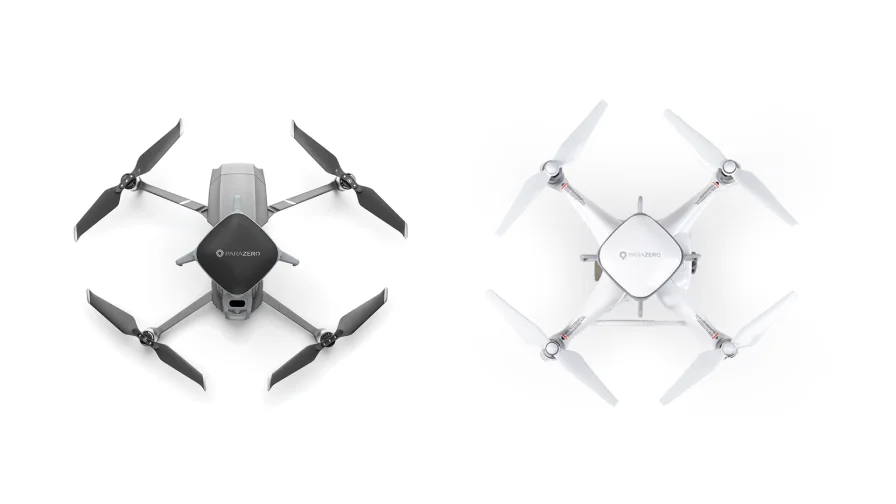
A safety feature on these drones were prototyped multiple times with PolyJet technology to achieve the final optimal configuration.
FDM® technology is one of the most widely adopted 3D printing methods for drone manufacturing. It works by extruding thermoplastic filament in layers to form durable, strong parts, whether they’re functional prototypes or end-use components used on flying drones.
For UAV applications, FDM shines when producing structural elements like 3D printed drone frames, motor mounts, landing gear, or payload enclosures. The wide range of available materials makes matching the right material to the application easy. General-purpose materials like ABS and ASA are lower-cost options that provide good print results. Other materials such as PC-ESD (electrostatic dissipative polycarbonate) make effective manufacturing aids to eliminate static buildup in the assembly of drone electronic components. For more demanding applications, high-performance thermoplastics such as ULTEM™ resins, carbon-fiber polymers, and Antero® PEKK-based materials offer high strength, chemical and heat resistance, and other beneficial attributes.
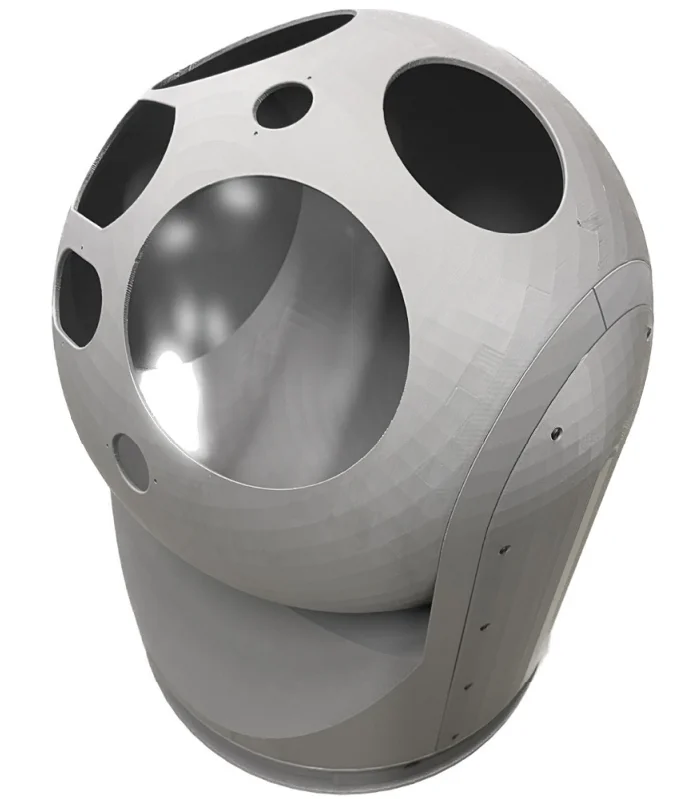
ASA thermoplastic was used for this 3D printed camera housing used on a military drone.
FDM printers range from office-friendly systems with a small footprint and versatile capabilities to industrial production systems like the Fortus 450mc™, F900®, and F3300®. The F3300 embodies next-generation FDM technology, with print speeds up to 3X faster than legacy printers resulting in higher throughput and lower cost-per-part.
When prototyping parts that need a high level of precision combined with an excellent surface finish, stereolithography (SLA) is a top choice. SLA uses a laser to cure photopolymer resins, resulting in parts with extremely fine detail. This makes it ideal for components that require tight tolerances or smooth aerodynamic surfaces.
This technology benefits early-stage development, where engineers need prototypes that look and feel like the final product. For example, airflow-optimized covers or test casings can be produced with near-injection-mold quality, perfect for wind tunnel testing or visual mockups.
Stratasys SLA technology is delivered through the Neo® line of SLA printers. The Neo800+ 3D printer boasts an industry-leading print speed and a very generous build chamber, perfect for printing larger UAV components. Together with an open material system, Neo SLA technology offers a versatile option for highly accurate UAV prototypes and low-volume end-use parts.
SAF® Selective Absorption Fusion® technology offers the repeatability and throughput needed for scaling up drone production. Using a powder-based process, SAF technology builds strong thermoplastic parts with fine detail and isotropic mechanical properties. One of its primary advantages lies in its production capacity, which can produce much higher quantities of printed parts relative to other 3D printing technologies at a competitive cost. However, another notable benefit is SAF™ Relife, which allows repurposing used PA12 powder from technologies like SLS or MJF—previously considered waste—into end-use parts. It’s a significant advantage for customers looking for sustainable printing options. SAF technology also requires no inert gases for operation, unlike the SLS process, further contributing to its sustainability benefits.
SAF technology is enabled through the H350® 3D printer and can produce dozens or hundreds of UAV components like brackets, frames, housing panels, or battery cradles in a single print. Its consistency makes it ideal for manufacturers who want to bridge the gap between prototyping and full-scale production without investing in tooling or waiting for parts from overseas suppliers. More importantly, SAF technology also produces parts for a lower per-part cost than other existing PBF technologies.
For drone programs that require cost-effective part replication and volume production, SAF technology provides the performance and reliability to deliver.
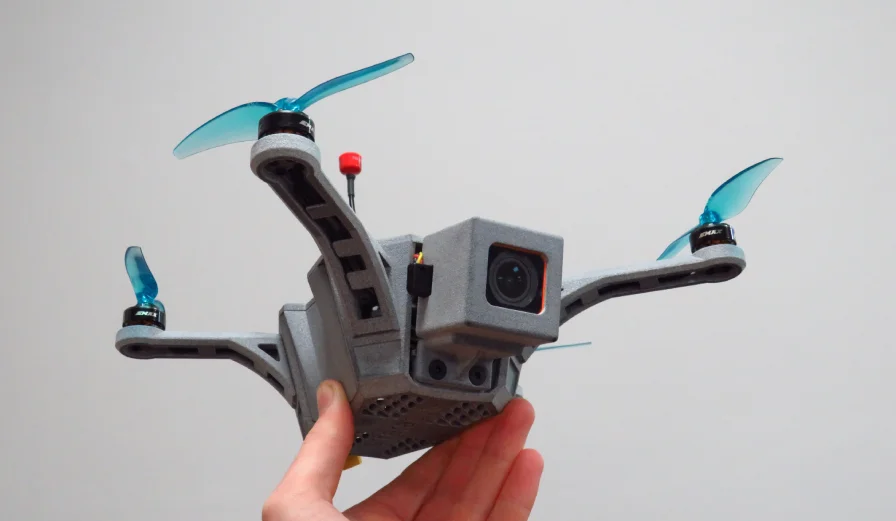
Programmable PhotoPolymerization (P3™) DLP technology enables the production of small, highly detailed components using high-performance resins. Origin® P3 DLP printers can produce UAV parts like sensor mounts, gimbal brackets, and connector housings where tight tolerances and mechanical performance are essential. In addition, parts made on Origin printers exhibit a very smooth surface finish, mimicking the results achieved with injection molding.
Beyond its print capabilities, P3 DLP technology stands out for its material diversity. Engineers can select from tough, heat-resistant, ESD-safe, and elastomeric materials depending on the need. This makes it ideal for applications where design intricacy meets demanding conditions, such as modular drone accessories or shock-absorbing mounts.
When strength-to-weight ratio is a critical factor, as it often is in drone design, composite 3D printing offers an unparalleled advantage. By infusing base thermoplastics with chopped carbon fiber, the resulting material provides parts with exceptional strength, stiffness, and durability while maintaining the lightweight characteristics of polymer.
Composite-ready FDM printers can produce parts that require superior strength, such as drone arms, booms, or internal cross-bracing. Materials like FDM® Nylon-CF10 or FDM® Nylon 12CF combine the benefits of a 3D printed polymer with the structural performance of traditional composites but without the labor-intensive layup processes.
For UAVs used in defense, aerospace, or any heavy-duty application, composite 3D printing is key to achieving lightweight designs that won’t compromise under load.
What types of drone components can be 3D printed?
Many drone parts can benefit from AM, such as 3D printed propeller guards, airframes, landing gear, motor mounts, sensor housings, aerodynamic fairings, internal brackets, and enclosures for electronics or batteries. The types of parts that can be printed are limited only by additive technology’s ability to meet the design requirements.
Which 3D printing technologies are best for drone production?
What materials are typically used for 3D printed drones?
Materials include:
Are 3D printed drone parts durable enough for flight?
When using engineering-grade thermoplastics or composites, 3D printed parts can match or exceed the mechanical performance of injection-molded components and even metal parts in some applications, particularly for parts like arms, frames, and structural supports.
Can 3D printing be used to manufacture military or tactical drones?
Yes. Military users deploy additive manufacturing for attritable drones, custom mission payloads, and in-field part replacement. Flame-retardant and radar-absorbing materials are especially valuable in defense applications.
What benefits does 3D printing provide over traditional manufacturing for drones?
How lightweight can 3D printed drone parts be?
3D printed UAV parts can be made very lightweight by employing designs that include internal lattices, hollow structures, or topology-optimized geometries to minimize mass while maintaining strength. This directly benefits flight time, maneuverability, and payload capacity.
Can I 3D print replacement parts for my drone in the field?
Yes, many organizations, especially in defense and field operations, deploy portable or on-site 3D printers to fabricate replacement parts, reducing downtime and eliminating the need to carry large inventories.
Do 3D printed drone parts require post-processing?
It depends on the application and the additive technology used. Some parts can be used as-printed; others may benefit from post-processing such as surface smoothing, support removal, machining, sealing, or painting for improved fit, finish, or performance.
Is 3D printing cost-effective for drone manufacturing?
For low- to mid-volume production, rapid prototyping, or custom drones, 3D printing is often more cost-effective than traditional methods due to lower tooling costs and faster turnaround. It’s especially well-suited for high-mix, low-volume needs.
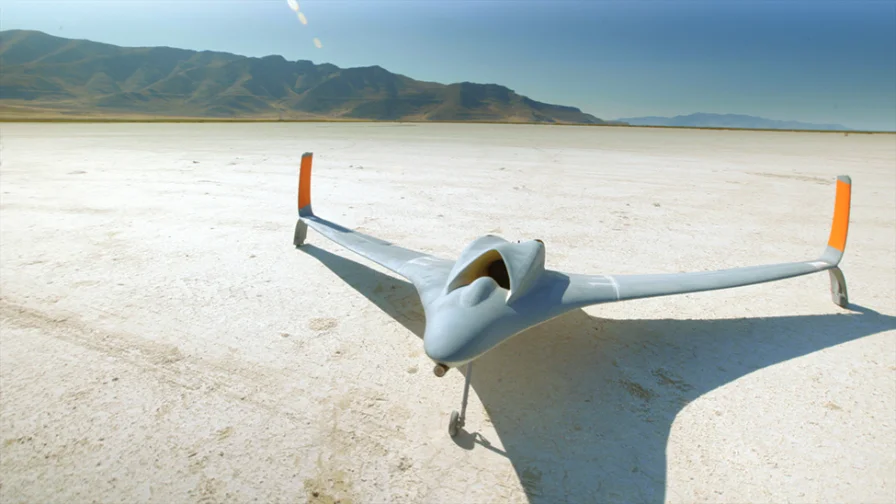
Hopefully, we’ve been able to show how additive manufacturing presents an excellent fit for drone and UAV production. Three significant factors are the ability to easily change designs to accommodate varied mission objectives, the favorable economics associated with lower-volume production, and the ability to protect intellectual property through in-house production or secure contract manufacturing.
Stratasys has the most comprehensive process and material technology to accommodate virtually any specific use case in the production of UAVs. More importantly, however, we have the experience, industry tenure, and the support team capable of helping you where and when you need it most. We’ve been a trusted partner of aerospace companies for over 30 years, backed by team members that come from the aerospace industry. Whether your focus is larger UAVs, small hand-held drones, or advanced drone fabrication, we’re here to help you succeed with additive technology.
When you’re ready to integrate 3D printing in your drone manufacturing, contact a Stratasys representative to see how we can help.